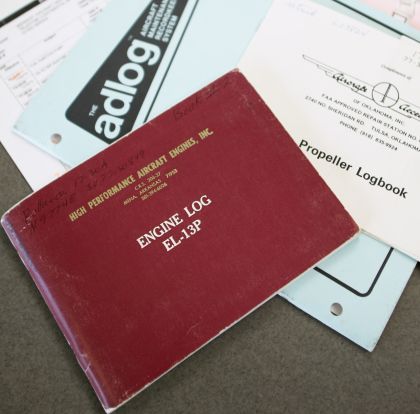Is there a flying club equivalent of a ramp check and what records should a club keep for such checks?
 This question of the month started as a posting on the AOPA Flying Club Network Facebook page. A club had just relocated, and they were wondering about what records must be kept, and who may ask to see those records.
This question of the month started as a posting on the AOPA Flying Club Network Facebook page. A club had just relocated, and they were wondering about what records must be kept, and who may ask to see those records.
First, bear in mind that every operator of the plane (club members) must comply with the “regular” FAA ramp check. This is a whole article in itself, which we’ll save for another day. But in the scope of this article, there is an implied club responsibility regarding the “regular” ramp check – and it relates to aircraft documentation and records.
The rules and regulations frequently talk about “owner or operator." We generally think of the “operator” as the pilot in command, but the FAA definition of “operate” includes “cause to use, or authorize to use aircraft…” Owner, in the case of a club, may be the club itself or a part-owner member of the club. Roughly translated this means that the club (owner) and member (operator) must comply with airworthiness, registration, accurate maintenance logs, etc. (FAR 91.403). Of course, it is always the pilot in command’s responsibility to ensure that these are correct before flight, but the club has a role in this too (FAR 1, 91.7, 91.103).
Now let’s move to the spirit of the questions. Flying Clubs are not “regulated” as such, but they are expected to operate in compliance with several policies and orders. One of these, FAA Order 5190.6B (The Airport Compliance Manual) provides guidance to airport operators. Essentially, airports that have taken federal grants for airport improvement projects commit to the FAA that the airport will be accessible to all qualified individuals and businesses, and that all airport tenants will be treated fairly and non-exclusively.
The FAA effectively delegates responsibility of compliance for these “grant assurances” to the airport operator, who in turn may impose additional compliance standards onto airport tenants, including flying clubs, such that fair play is practiced at that airport. So, getting to the point, the FAA empowers the airport operator to ensure that a flying club operates in compliance – and as such, the operator is perfectly within its rights to view and audit club documents, reports and finances. In return for compliance to the standards, a flying club is afforded privileges that are not extended to commercial businesses so, reasonably, the airport operator may seek to ensure that clubs (and businesses) are operating fairly, and within the standards imposed.
A recent amendment to Order 5190.6B clarifies the definition of a flying club, and states that clubs shall not operate as businesses, shall not provide services to non-members, and that a club shall not provide, hold-out or otherwise advertise services to non-members. You can see the sense in this. If a club crosses the line and, due to its lower operating costs, starts to offer “cheaper” flight training to non-members, it could be at the financial disadvantage of a commercial flight school.
To help with compliance expectations, the airport operator should provide a club with:
With the last point in mind, we recommend a club keeps the following (see the list below). A club is then prepared to share documents and records, upon due notice and explanation, to various official bodies. These include the airport operator, the FAA, TSA, and IRS.
To be honest, as a well-run club, you’ll probably be keeping these records anyway, as a matter of good governance:
In summary, there is not a flying club equivalent of a ramp check. As the operator of a club aircraft, a member might find themselves the subject of an FAA ramp check, and with that in mind, both the member and the club share a responsibility to ensure that all appropriate documentation is in order. More about ramp checks can be found here.